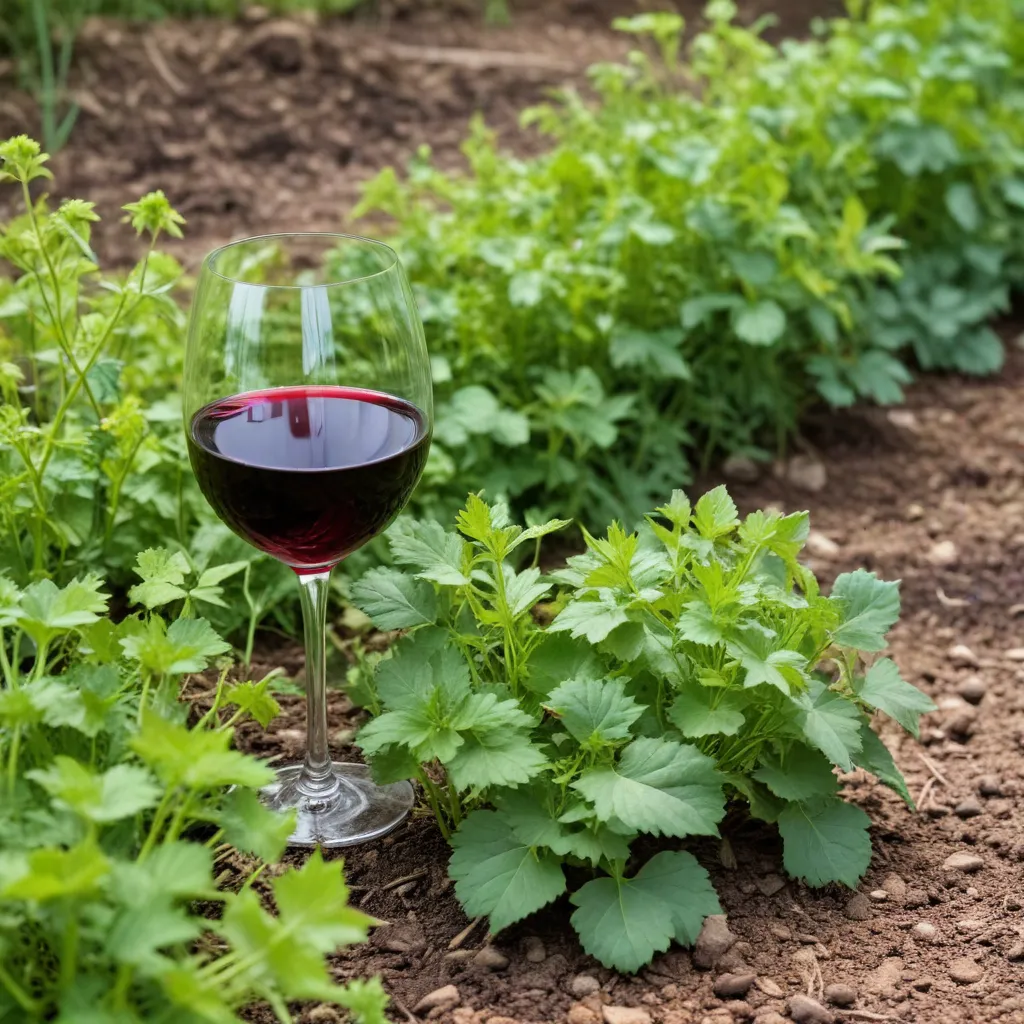
As a hospitality and wine expert here at the Wine Garden Inn, I’m thrilled to share my insights on how you can enhance your culinary and wine-pairing experiences by incorporating edible weeds into your home garden. Overlooked by many, these nutrient-dense “weeds” offer a world of flavor potential that can beautifully complement the diverse aromas and profiles of our estate-grown wines.
Identifying Edible Weeds
Common Edible Weeds
While the term “weed” may conjure up images of unruly, unwanted plants, many species that commonly proliferate in gardens and lawns are in fact quite edible and nutritious. Some of the most recognizable edible weeds include dandelion, purslane, chickweed, lambsquarters, sorrel, and amaranth. These plants often contain higher concentrations of vitamins, minerals, and antioxidants compared to their cultivated counterparts.
Foraging for Wild Greens
In addition to the weeds that may sprout up in your own backyard, exploring nearby natural areas can uncover a bounty of wild, foraged greens. However, it’s crucial to properly identify any plants before consumption, as some species may be toxic. Consult field guides, local plant experts, or reputable online resources to learn which wild edibles are safe to harvest in your region.
Nutrition Profile of Edible Weeds
Many edible weeds are nutrient powerhouses. For example, dandelion greens are rich in vitamins A, C, and K, as well as minerals like iron, calcium, and potassium. Purslane contains high levels of omega-3 fatty acids, while lambsquarters boasts impressive amounts of protein, fiber, and antioxidants. Incorporating these wild, free-growing plants into your diet can be an excellent way to boost your overall nutritional intake.
Cultivating Edible Weeds
Growing Conditions for Edible Weeds
Fortunately, edible weeds tend to thrive in a wide range of growing conditions, making them relatively easy to cultivate. Most prefer full sun exposure and well-drained, nutrient-rich soil. Purslane, for instance, thrives in hot, dry environments, while chickweed and sorrel prefer cooler, moist conditions.
Propagation Methods
Many edible weeds self-seed readily, so allowing some plants to flower and go to seed can ensure a continuous supply. You can also directly sow seeds or transplant young seedlings into your garden beds. Some species, like dandelion and amaranth, can even be propagated from root cuttings or divisions.
Harvesting and Preserving Edible Weeds
For the freshest flavors, harvest edible weeds in the morning, when their leaves are most turgid. Snip or pluck the leaves, flowers, and tender stems, avoiding any discolored or damaged parts. To preserve your bounty, you can dry, freeze, or ferment the edible weeds for later use.
Pairing Edible Weeds with Wine
Wine Flavor Profiles
The diverse flavors of edible weeds can complement a wide range of wines, from dry and crisp to sweet and lush. Dry wines, such as our estate-grown Sauvignon Blanc or Chardonnay, often pair well with the bitterness and acidity of greens like dandelion or sorrel. Sweet wines, like our late-harvest Riesling, can balance the earthy, herbaceous notes of plants like purslane or lambsquarters. And sparkling wines can provide a refreshing counterpoint to the peppery or floral nuances of edible weeds.
Complementary Flavor Combinations
When pairing edible weeds with wine, consider the interplay of key taste elements. The bitterness and acidity of greens like dandelion or sorrel can cut through the richness of a Chardonnay, while the sweetness of a Riesling can tame the earthy, umami flavors of purslane or lambsquarters. Similarly, the herbaceous notes of borage or marigold can echo the aromatic complexity of a Sauvignon Blanc or Pinot Gris.
Recipes and Flavor Pairings
Edible Weed Salads
A simple mixed greens salad showcasing a variety of edible weeds, such as dandelion, purslane, and chickweed, can be a wonderful complement to our crisp, mineral-driven Sauvignon Blanc. The bitterness and crunch of the weeds pair beautifully with the wine’s refreshing acidity.
Edible Weed-Infused Dishes
Sautéed edible weeds, such as lambsquarters or amaranth, make a flavorful addition to pasta dishes or grain bowls. Their earthy, slightly peppery notes can elevate the fruity, medium-bodied character of our estate Pinot Noir. Alternatively, an herbal pesto made with foraged weeds like sorrel or borage can be a delightful accompaniment to our soft, creamy Chardonnay.
The Art of Winemaking
The Winemaking Process
At the Wine Garden Inn, we take great pride in our estate-grown wines, which are the result of meticulous attention to every step of the winemaking process. From carefully tending to our vines and managing the soil acidity to precisely controlling the fermentation and aging regimens, our vintners strive to coax out the unique terroir and varietal expressions of our grapes.
Sustainable Winemaking Practices
In our pursuit of exceptional wine quality, we also prioritize sustainable and environmentally-conscious practices. This includes implementing organic and biodynamic viticulture techniques, minimizing water usage, and finding creative ways to repurpose or compost winemaking byproducts. By integrating these principles into every aspect of our operations, we aim to not only produce world-class wines but also safeguard the land for generations to come.
Whether you’re a seasoned oenophile or an aspiring home gardener, I hope this article has inspired you to explore the vibrant flavors and nutritional benefits of edible weeds and how they can elevate your wine-pairing experiences. By cultivating these unsung heroes of the plant world, you can unlock a whole new realm of culinary and sensory delights. I look forward to welcoming you to the Wine Garden Inn, where we will continue to celebrate the synergy between our estate-grown produce, handcrafted wines, and the art of sustainable winemaking.
